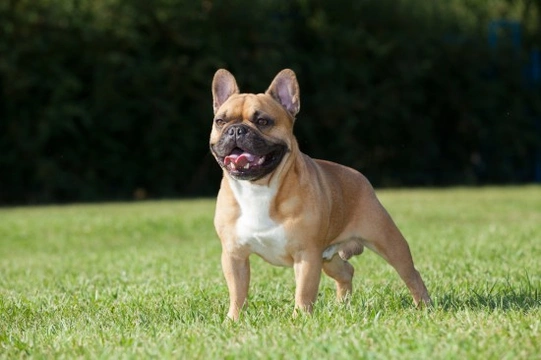
French bulldog health and care
The French bulldog or “Frenchie” is a small breed of dog that was first created in the 1800’s as the result of crossing English bulldogs with working dogs native to Paris that were commonly kept for ratting. Bred as a companion and lap dog at a time when bulldogs of all types were very popular and interest in small, pet bulldogs was on the rise, the French bulldog is a comical, loyal and loving little dog with a very distinctive appearance. They have the typical brachycephalic bulldog face, with large, pointed ears, and small, well-padded bodies.
They are also renowned for their comical natures and love of fun and games, and can be very entertaining dogs to keep!
However, the French bulldog is a breed that can be prone to a range of health issues, many of which are genetically inherited from certain breed lines, or caused by the .dogs’ unique conformation. All potential French bulldog owners should make themselves aware of potential health issues and the care requirements of the French bulldog before committing to a purchase, and in this article, we will cover these topics in more detail. Read on to learn more about French bulldog health and care.
Health issues commonly seen within French bulldog breed lines
The French bulldog may potentially suffer from a range of health problems, both those that are genetically inherited and prevalent across the breed, and those that are related to the dog’s build.
The brachycephalic muzzle
The French bulldog is a brachycephalic dog, meaning that they have a short, squat face that leads to shortened airways when compared to the muzzles of other dogs. One of the main problems that this can cause is difficulty maintaining a stable body temperature, and the French bulldog is very prone to overheating. Dogs pant to cool down, and the shortened airways of the breed makes this challenging for the dog.
This makes the French bulldog very prone to problems such as overheating and heat stroke, and special care must be taken of dogs of the breed during the hotter months of the year. Notably, certain airlines forbid brachycephalic breeds from flying on their planes, as the combination of stress and the temperature of the aircraft’s cargo hold can pose a real risk to the health of the dog.
Back, spine and skeletal issues
Due to the small size of the French bulldog and the fact that they were bred from small bulldog breeds that may have possessed the genes for certain types of dwarfism, the French bulldog is also more prone than most breeds to problems with the back and spine.
Because of the prevalence of malformations and problems within the breed, some breeders have their potential breeding pairs x-rayed to identify any potential hereditary problems prior to breeding.
Patellar luxation also affects the breed in reasonable numbers, causing dislocation of the kneecap of the dog. The patella is held by ligaments that allow the joint to move in the femur, and when this does not happen in the normal way, can cause the kneecap to slip on either the inside or outside of the leg.
This condition can be caused by either hereditary factors, or due to injury, and may affect either one or both of the front legs. Tests can be performed on dogs to see if they are likely to suffer from patellar luxation, and again, dogs with elevated risk factors should not be used for breeding.
Eye problems
The French bulldog is prone to suffering from a range of different eye conditions, some of which are hereditary and some of which are caused by the prominent set of the eyes within the face.
Cherry eye is one such problem, which occurs when the third eyelid becomes inflamed and protrudes, and this condition is also common to the Pug and the English bulldog.
Juvenile cataracts also occur within French bulldog breed lines, as does glaucoma, corneal ulcers, and retinal fold dysplasia.
The Canine Eye Registration Foundation (CERF) runs screening programmes for dogs of breeds that are considered to be at heightened risk of eye problems, and recommends testing of French bulldogs that are being considered for breeding.
The skin around the eyes and face of the French bulldog is also creased, which can trap moisture, dirt and bacteria, necessitating regular cleaning of the skin folds, keeping them dry, and checking for problems.
Breeding and reproduction
Up to 80% of French bulldog dams require caesarean section to deliver their litters, due to the combination of the large head of the puppies and the narrow hips of the dam making a natural delivery challenging and in many cases, impossible.
When it comes to breeding itself, many French bulldog stud dogs are unable to mount and tie with the female, again due to the slim hips of the breed, making artificial insemination necessary in many cases to enable reproduction.



